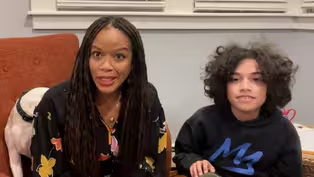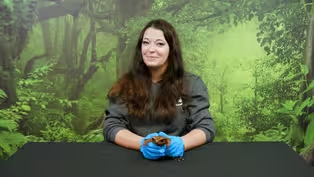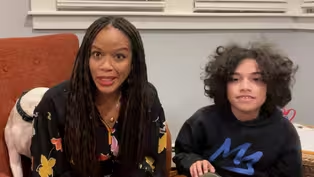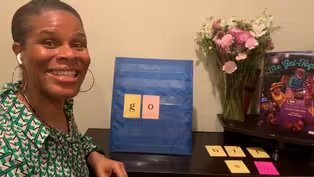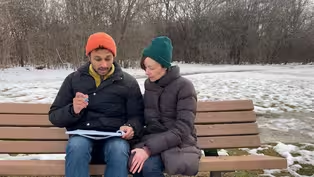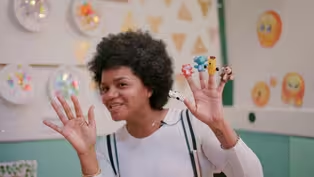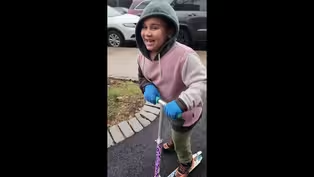
SUFFRAGIST MOVEMENT
Clip: 5/19/2023 | 6m 13sVideo has Audio Description, Closed Captions
Cheyney McKnight from the New-York Historical Society explores the suffragist movement.
Cheyney McKnight from the New-York Historical Society explores the strategies women used to get the right to vote.
See all videos with Audio DescriptionADProblems playing video? | Closed Captioning Feedback
Problems playing video? | Closed Captioning Feedback
Let's Learn is a local public television program presented by THIRTEEN PBS

SUFFRAGIST MOVEMENT
Clip: 5/19/2023 | 6m 13sVideo has Audio Description, Closed Captions
Cheyney McKnight from the New-York Historical Society explores the strategies women used to get the right to vote.
See all videos with Audio DescriptionADProblems playing video? | Closed Captioning Feedback
How to Watch Let's Learn
Let's Learn is available to stream on pbs.org and the free PBS App, available on iPhone, Apple TV, Android TV, Android smartphones, Amazon Fire TV, Amazon Fire Tablet, Roku, Samsung Smart TV, and Vizio.
Providing Support for PBS.org
Learn Moreabout PBS online sponsorship[upbeat music] - Welcome to Let's Learn Living History here at New York Historical Society.
My name is Ms. Cheyney, and today we're going to talk about Suffragist who fought for women's right to vote a hundred years ago.
You may notice that I'm wearing an unusual outfit for today.
This is the type of dress a woman would've worn about 100 years ago.
To start, let's learn some vocabulary words.
First word is voting.
Voting is when a person gives their opinion on a subject to make decisions for the whole group.
Here's an example.
Raise your hand if you would like chips for a snack.
I see one, two, three, four, five and six.
Now raise your hand if you want carrot sticks and hummus for a snack.
Let's see, one, two, three, four and five.
Chips has it.
You just voted whether your choice was picked or not.
By raising your hand, you tell people what you want and your voice was counted and heard.
Next vocabulary word is suffrage.
Suffrage means the right to vote.
Today, most people who are US citizens and are 18 years or older have the right to vote.
In the past, many people were not allowed to vote.
Black Americans, Chinese Americans, and women were some examples of people who could not vote back then.
Think back to our vote for snacks.
Imagine if your friends were able to vote for what they wanted for snack, and you were prevented for voting for no other reason than the way you look.
You would not have suffrage or in other words, you would not have the right to vote.
You still had to eat the snack, but had no voice in the decision.
Seems very unfair, right?
Next vocabulary word is suffragists.
Suffragist were activists who wanted to win the right to vote for women.
Activists are people who deeply care about an issue and spend time telling and convincing other people about their cause.
Today we're going to learn about a few of the methods used by Suffragist to convince men to give women the right to vote.
There were many women and men who did this work over many decades.
You might have heard of a few Suffragist such as, Ida B.
Wells, Susan B. Anthony and Alice Paul.
Unfortunately, not all Suffragist agreed on which women should have the right to vote.
Even though Suffragist worked to make sure women had the right to vote, some women were left out based on the color of their skin or where they came from.
Black suffragists were often excluded from parades and groups.
And in order to overcome their exclusion, they relied mainly on black women's clubs.
Like other activists, suffragists had a lot of different tactics for getting their message out to their communities.
Let's explore a few now.
First method the suffragists used was demonstrating, which was when a group of people march or stand together to show that they disagree with or support something or someone.
Suffragists would gather as a group and carry signs and wear sashes like this one.
Very dashing, isn't it?
They would stand in an important place so that people would see their message.
For example, this is a copy of a sign that was carried by Suffragist who were part of the National Women's Party.
They demonstrated in front of the White House so that the President would hear their demands.
The next method the Suffragist used was lobbying, which is an attempt to influence government action through communicating with others and petitioning and gathering a large number of people to sign a document demanding action.
Suffragists would write letters to elected officials to make an argument for the right to vote.
They would also make sure to have as many people sign the letter as possible so that the elected official knew how many people cared about this right.
The last method we're going to talk about is street speaking.
Now this would've been considered very scandalous during the time.
It was a chance for suffragist to talk to people one on one on the sidewalk.
A hundred years ago, it was not considered appropriate for women to talk about politics, let alone to strangers on the street.
Lots of Americans had old-fashioned ideas about why women shouldn't be able to vote, and Suffragists needed to have lots of conversations to argue their points.
They handed out leaflets, like these, to passerby's on the street.
Some of them were 12 reasons why women should vote.
Their hard work paid off.
The 19th Amendment was ratified on August 18th, 1920, and it stated the right of citizens, the United States to vote shall not be denied or abridged by the United States or by any state on account of sex.
This amendment changed US law and said women could vote in political elections.
Thank you for joining us on Let's Learn Living History and hearing more about how women won the right to vote.
Video has Audio Description, Closed Captions
Clip: 6/12/2023 | 9m 36s | Maria Begg-Roberson reads THE LITTLE CAR by Xu Han. (9m 36s)
Video has Audio Description, Closed Captions
Clip: 5/19/2023 | 9m 20s | Devon Ritter from the Memphis Zoo explores how animals run, slither, fly, and hop to move. (9m 20s)
Video has Audio Description, Closed Captions
Clip: 5/19/2023 | 9m 36s | Maria Begg-Roberson reads THE LITTLE CAR by Xu Han. (9m 36s)
Video has Audio Description, Closed Captions
Clip: 5/19/2023 | 10m 22s | Isabel Simmons explores how to blend, read, and write words with long o and ow. (10m 22s)
Video has Audio Description, Closed Captions
Clip: 5/19/2023 | 7m 42s | Omar Etman takes a bike ride and makes a map of his journey. He shares with Lily Fincher. (7m 42s)
Video has Audio Description, Closed Captions
Clip: 5/19/2023 | 11m 24s | Diane Sanlatte teaches a version of the song “No More Monkeys” in Spanish. (11m 24s)
TIBERIUS SHOWS HOW TO RIDE A SCOOTER!
Video has Audio Description, Closed Captions
Clip: 5/19/2023 | 28s | Tiberius shows how to ride a scooter. (28s)
Providing Support for PBS.org
Learn Moreabout PBS online sponsorshipSupport for PBS provided by:
Let's Learn is a local public television program presented by THIRTEEN PBS
